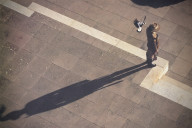The !Gwikwe Bushmen’s “ostrich dance” invites us to reflect on the original inspirations for Capoeira.
The origins of Capoeira are controversial. There has been much speculation about its roots and many claims have been made on where and how this martial art dance evolved and when and in what form it arrived in Brazil. It is generally agreed that is a Kongo-Angolan expression and likely arrived in Brazil around the 16th century with the Portuguese deportation of slaves from western and central Africa.[1] Its evolution since then into a global phenomena has largely been through Afro-Brazilian adaptation.
One theory gleaned from an old letter by ethnographer Albano de Neves e Souza, is that “N’golo is capoeira”. Albano wrote that N’golo was an acrobatic zebra dance performed by young males of the Mucope people in Angola [1]. Similarly, the famous Capoeira master Vincente Pastinha stated that his teacher, a man from Angola named Benedito, told him that Capoeira came from the N’golo dance.[1]
With this in mind, I was struck when watching the compelling 1985 documentary People of the Great Sand Face (by anthropologist Paul John Myburgh [2]). This powerful and poignant film follows the final year in the traditional life of the last free‐living !Gwikwe Bushmen of the central Kalahari Desert of Botswana, before they followed others to a government settlement and, in doing so, dissolved a remnant piece of ancient human culture.
About halfway through the film, a fascinating scene captivated my attention. I played it again and again. This ostrich dance performed by the !Gwikwe Bushmen was uncannily similar to traditional Capoeira:
So I would like to propose a theory that Capoeira is older still. We can be reasonably certain that the Bantu peoples of southern Angola (e.g. Nhaneca-Humbe and Herero ethnic groups) interacted with San Bushmen groups since they were mobile peoples inhabiting the same region. Were they influenced by such dances and integrated forms of it into their cultures? Were these dances further transmitted to and adapted by other Bantu tribes such as the Mucope? If so, this would mean that the true origins of Capoeira would be thousands of years old.
Why is this important to consider? There are at least two reasons:
- History has been – and still is – cruel to San Bushmen groups [3]. Their rights and even their very personhood has been neglected in so many ways – genocide, if you will. At nearly every turn in modern human history, they have been the forgotten people – overlooked, dismissed and denied rights and acknolwedgements that would allow for continuing culture, community and connection. They are arguably our oldest surviving ancestors – most of the world’s human DNA can be traced back to these peoples of southern Africa. Yet we seem to dissociate ourselves from this – as if we are “above and beyond” such primitive people and practices. Instead, we have pickled the San in a separatist and voyeuristic myth that still imagines them to be running wild, free and healthy in loincloths with tiny bows and arrows somewhere in the Kalahari. So, for me, denying the possibility that Capoeria could actually be a “Bushmen thing” is to again diminish their rich cultural legacy to all humanity.
- Capoeira reminds us of our connectedness with nature. Irrespective of whether Angolan Bantu tribes were influenced by the San Bushmen, it still strongly suggests that Caopeira was inspired by attentiveness toward nature; in this case, the close observation and imitation of animal behaviour (e.g. a kicking zebra). Mimicry of nature is part of who we are, what we have done for thousands of years and is integral to human creativity, storytelling and artistic expression. I often wonder how many students of Yoga, Tai Chi, Qigong, Ninjutsu (and other Eastern martial arts) practicing their moves in studios around the world realise that most are derived from emulating animal behaviour and form. Many Aboriginal, African and Native American dances do the same. Again, the blindspot and denial about our innate co-evolution with nature is starkly apparent. It only follows then that we would also disassociate ourselves from the (indigenous) people’s who are in closest connection with the more-than-human world.
We need to remember. We need to rediscover. We need to reimagine. This can only happen by continuously questioning our own assumptions, beliefs and views we hold about the world. Understanding where we have come from – and what makes us thrive as humans in this shared dance of life – is essential for chartering where (and how) we are going.
References:
[1] “The Tradition of Capoeira” : http://www.joaogrande.org/capoeira_angola.htm [2] “People of the Great Sand Face” (1985). Filmed, directed, narrated and produced by Paul John Myburgh. Production Company: Anglia Television. Sponsor: Channel Four (UK). [3] Usage of the terms “San” and/or “Bushmen” is often debated. Click here and here for further history.











Be the first to share a comment